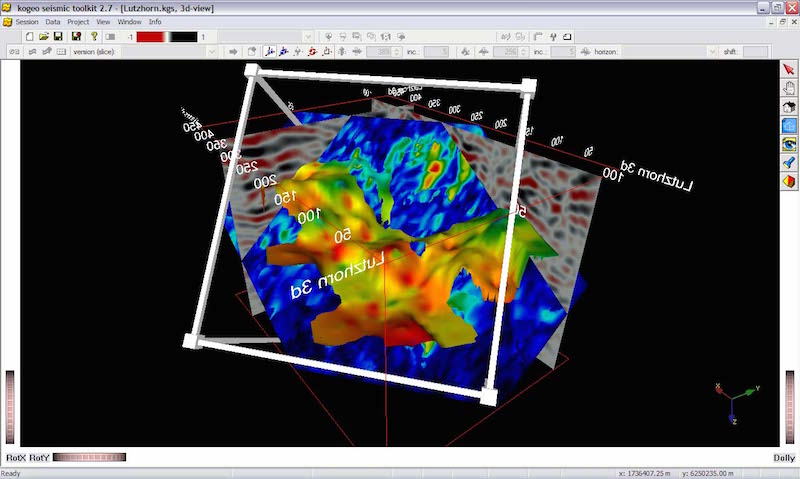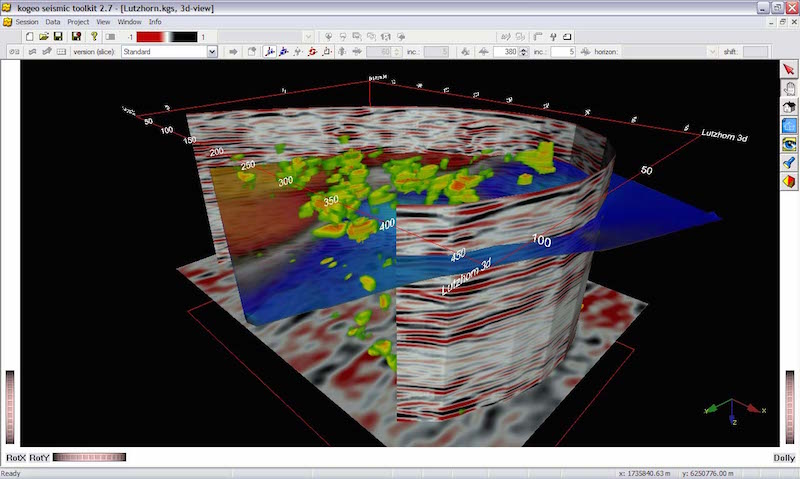kogeo seismic toolkit
What is kogeo and what is it good for...
I’ve been working on kogeo in my spare time for a pretty long while now, and in the meantime I think it got ‘complete’ enough to be brought into public. So here we go - there are probably interesting features, even for professionals!
One important issue ahead of all the others: there isn’t much documentation around, so whenever you have questions or comments about kogeo, don’t hesitate to contact me; you’ll find contact information on the bottom of all the pages of the kogeo website.
The basic idea behind kogeo was to have a handy tool to deal with every day's seismic data problems, since we’re producing it on our own here at the IfBM. kogeo is not meant to replace any of the common seismic software packages, just to be a kind of extra - especially, if you like to experiment with your data. With kogeo you can import/export/analyze/visualize 2d and 3d seismic data from various sources; see the features section for more details. By the way, don’t expect kogeo to be free from bugs - there’re plenty, I’m afraid...
kogeo was designed from the very start to run on Windows systems, so there aren’t any versions for Linux, Unix, MacOS or whatsoever.
kogeo is published under the terms of the GNU General Public License (GPL), which means that you can freely download it, distribute copies of it or modify it or use pieces of it in new free software if you like to. According to this license, kogeo is distributed in the hope that it might be useful, but WITHOUT ANY WARRANTY; without even the implied warranty of MERCHANTABILITY or FITNESS FOR A PARTICULAR PURPOSE.



















